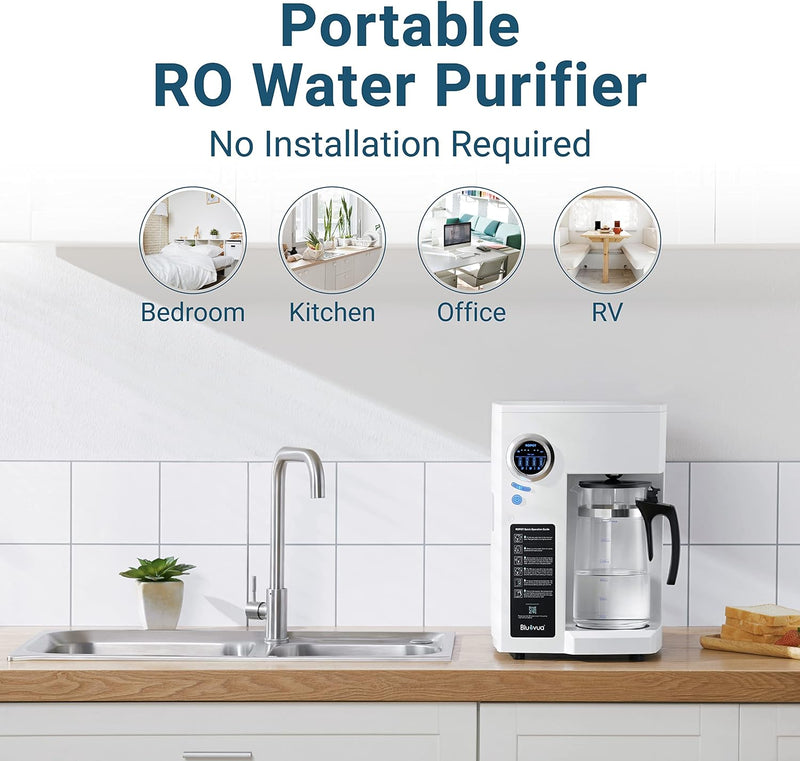Transform Your Water Experience: Discover the Secret to Pure Refreshment!
Access to clean drinking water is a fundamental necessity for a healthy lifestyle, yet many households are unknowingly exposed to various contaminants lurking in their tap water. From chlorine and heavy metals to bacteria and pesticides, these impurities can adversely affect both our health and our water’s taste. This is where countertop reverse osmosis (RO) water filters come into play, providing a simple and effective solution for ensuring pure refreshment. By utilizing advanced filtration technology, these systems can significantly reduce harmful substances, delivering water that not only tastes better but is also safer for consumption. In this article, we will explore the features, selection criteria, and installation tips for countertop RO water filters, guiding you toward making an informed purchase decision.

Understanding Countertop Reverse Osmosis Water Filters
Countertop reverse osmosis water filters are compact, user-friendly systems designed to purify tap water, making it suitable for drinking and cooking. The core of the RO process involves pushing water through a semi-permeable membrane that allows only pure water to pass while blocking a wide range of contaminants. This multi-stage filtration process typically includes pre-filters to remove larger particles, the RO membrane that eliminates dissolved solids, and post-filters that enhance taste and quality. Compared to traditional water filters that may only reduce certain contaminants, countertop RO filters are known for their ability to remove up to 99% of impurities, including lead, fluoride, and nitrates. Their effectiveness in delivering clean, refreshing water makes them a popular choice for those looking to improve their water quality.
Key Features to Look For
When considering a countertop reverse osmosis water filter, it's essential to evaluate several key features to ensure you choose the right model for your needs. First, consider the filtration capacity, which indicates how much purified water the system can produce in a given time. For larger families, a model with higher capacity may be necessary. Additionally, ease of installation is a crucial factor—many countertop filters are designed for quick setup without the need for professional help. Space considerations are also important; ensure that the filter will fit comfortably on your countertop without obstructing other activities. Finally, maintenance requirements should not be overlooked; look for systems with easily replaceable filters and clear maintenance schedules to keep your water filter performing optimally.
Choosing the Right Countertop Filter for Your Home
Selecting the right countertop filter involves assessing several factors unique to your household. Start by testing your water quality; knowing the specific contaminants present will help you identify a system that effectively addresses your needs. Additionally, consider the size of your household—larger families may require a filter with a higher output. Personal preferences, such as the importance of taste and odor removal, can also influence your choice. Don’t shy away from comparing different models; reading user reviews and understanding specifications will equip you with the knowledge needed to make an informed decision. Remember, choosing the right filter is not just about the initial purchase price, but also about the long-term value it adds to your home.
Installation and Maintenance Tips
Installing a countertop reverse osmosis water filter is typically a straightforward process that can be completed in a few simple steps. Begin by placing the filter unit on your countertop, ensuring it's close to a sink for easy access to water. Connect the inlet hose to your faucet, and ensure all fittings are secure to prevent leaks. Once installed, run water through the system for a few minutes to flush out any residual impurities and prepare it for use. Maintenance involves regularly checking and replacing filters as per the manufacturer's recommendations. A good rule of thumb is to replace pre-filters every 6-12 months and the RO membrane every 2-3 years, depending on usage. Keeping a maintenance schedule will help ensure your system continues to deliver high-quality water for years to come.
Enhancing Your Water Quality with Countertop RO Filters
In summary, investing in a countertop reverse osmosis water filter is a proactive step toward improving your water quality and enhancing your overall health. By understanding the workings of these filters, identifying key features, and following proper installation and maintenance practices, you can enjoy clean, refreshing water straight from your tap. With the right filter, you’ll not only safeguard your health but also transform your daily hydration experience. Make the choice to invest in quality water today, and enjoy the benefits that come with it for a healthier lifestyle.






Comments